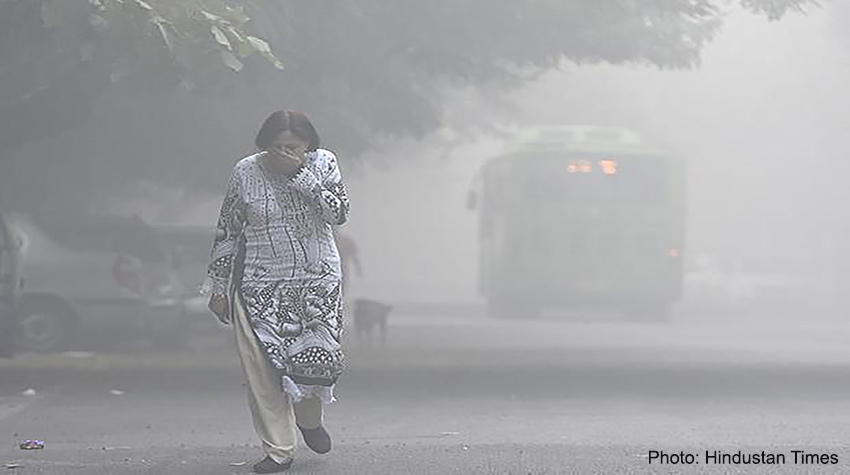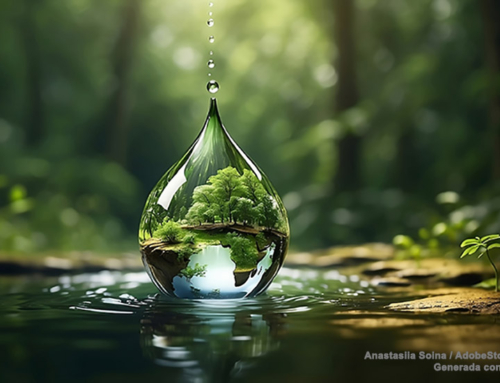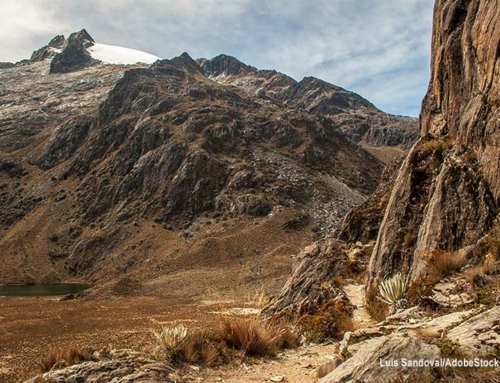At first sight the concern about air pollution, smog or pollution in cities, has been relegated to the background by universal and more alarming issues, which monopolize more headlines, such as global warming, climate change, the recent fire in the Amazon, the active hurricane season, the melting of the world’s glaciers, the defrost of Arctic and Antarctic ice or the risk of permafrost seals breaking and letting huge amounts of CO2 into the atmosphere, stored for millions of years under the soils of these extensive natural carbon sinks. However, for residents living in cities with a high concentration of smog, this issue is a priority.
The smog in big cities, a huge problem for its inhabitants
There are hundreds of millions of people who live surrounded by airs of poor quality in countless cities, many more than most believe. For the men, women and children who live in these big smoke-cities, who suffer from a severe and almost permanent smog, the problem is part of their day-to-day life. For them, smog is a closer and more urgent problem to solve than climate change and other threats on the planet, more distant and abstract than dense smoke, that which prevents them from being visible a few meters from their faces, that which they must breathe and swallow on the journeys to their jobs and schools, despite the mask they are wearing.
People’s concern for the air pollution, we corroborate it directly, through the tools we have at hand. With them we can measure the issues that most concern people. On a daily basis we realize that the calamity of poor air quality, far from moving to the background, has been increasing for many and is becoming a fundamental issue.
Origin of the word smog
The smog is a word derived from the combination of “smoke” and “fog”.
Causes of air pollution
Since the conclusion of World War II, we have witnessed the expansion of megacities, industrial areas, power plants and nuclear plants that spit clouds of smoke through their chimneys. Tens of millions of motor vehicles of all kinds circulate through the streets and highways of these mega cities that launch huge volumes of gases through their exhaust systems. To this we must add dust, pollen, mold spores and other solid particles from fires and other sources.
The combination of the air with these pollutants during a prolonged period of high atmospheric pressures (anticyclone), causes air stagnation and, therefore, their permanence in the troposphere (closest layer of the atmosphere to the ground, about 12 kilometers high) due to its higher density. There are two types of smog: industrial and photochemical. The first is related to factories and the second to automotive traffic.
The problem of the smog is aggravated in some cities, such as in Madrid, because the Spanish capital lacks natural corridors whose winds could expel the stale air in a short time. Similar phenomenon occurs in Los Angeles, Mexico City and in many other cities in the world that have high levels of smog.
The opposite happens in Caracas, due to the geographical characteristics of the privileged valley where the city sits, full of trees where the view is directed. The Venezuela’s capital, located 900 m above sea level, two or three times a year forms haze, a mist loaded with small particles of dust, ashes, clay or sand in suspension. Another type of haze occurs due to smoke from distant fires. In both cases, when the wind begins to blow, the fog disappears in a short time purifying the city air, as is its natural condition.
Formation and composition of air pollution
Part of these polluting mists are parked on the cities acquiring different shades, between gray, brown or red. Most of the smog we observe is the photochemical smog, produced by the reaction of sunlight with nitrogen oxides and one or more volatile organic compounds in the atmosphere. Nitrogen oxides come from the exhaust gases of cars, coal-fired power plants and factory emissions. Volatile organic compounds are released from gasoline, paints and cleaning solvents. When sunlight hits these chemicals, particles form in the air, what we call smog.
Main components of the smog and the diseases that can cause
Nitrogen oxides, both nitrogen monoxide (NO) and nitrogen dioxide (NO2) are two colorless, non-flammable, very toxic gases and major pollutants present in the smog. They come mostly from the escape of motor vehicles that use fossil fuels, but also from smoke from industrial areas. Both NO and NO2 are the biggest threats to health in big cities. They are related to the formation of mucus of the respiratory tract, a condition that can increase the risks of contracting chronic diseases such as allergies and asthma. Nitrogen oxides are very irritating and in high concentrations can cause bronchitis and pneumonia.
Ozone, as well as protecting us from the dangers of ultraviolet radiation from the sun in the upper atmosphere, when it is near the ground is harmful to health. The ozone that is produced in an unnatural way originates from other products, especially nitrogen oxides, aided by the intensity of sunlight, considered as a secondary pollutant. Ozone causes irritation of the mucous membranes and lung tissues, irritation of the eyes, expectoration, headaches and chest pains. Prolonged exposure to ozone causes major damage such as cataracts, blindness, skin cancer and effects on the immune system.
Sulfur dioxide is an irritant of the respiratory tract. In high concentrations it produces bronchitis and tracheitis. It can also aggravate respiratory and cardiovascular diseases.
Airborne particles can make asthma, respiratory and cardiovascular diseases worse. Chronic exposure to high concentrations increases the risk of death.
Lead can cause learning delays and behavior disorders.
Carbon monoxide, in high concentrations disables the transport of oxygen to the cells. Prolonged exposure can cause dizziness, headache, nausea, states of unconsciousness and even death.
Benzene produces harmful effects on the bone marrow. It damages the immune system and is associated with the development of myeloid leukemia. In women, this compound can cause irregularities in the womb and pass from the mother’s blood to the fetus in case they are pregnant.
Some countries with the worst air quality in the world
Africa: Nigeria, South Africa and Tunisia.
Asia: India, Pakistan and China.
Europe: FYR Macedonia, Bosnia-Herzegovina and Poland.
North and Central America: Mexico, United States and Jamaica.
South America: Peru, Chile and Brazil.
How to solve or mitigate the problem of air pollution?
There are different levels of actions that we can perform, both with our personal contribution and with the intervention of local or national authorities, especially in cities with lower quality airs. In the first level we consider palliative measures, but more practical and quicker to implement, although their effectiveness is much lower than that of the second level.
The Twenergy site, an online community, which aims to “serve as a reference in the field of energy efficiency and sustainable development”, recommends:
“Install catalysts in the exhaust pipes of vehicles. Improve the quality of public transport service that reduces the number of vehicles on the roads. Reduce travel needs by encouraging videoconferencing and directing urban designs towards proximity. Restrict access of motor vehicles in city centers. Replace the use of cars with other less polluting transport such as the train, or even, if possible, the bicycle. Improve combustion in power plants. Replace the components that use VOC (paints, solvents …), with others that do not contain them or avoid evaporation to the maximum. Promote the generation of electricity through renewable energies.”
The second level is the most effective, but more complex to achieve. This is the Paris Agreement, which contemplates reaching the goal of zero fossil fuels by 2050. Before this there are intermediate goals to reduce greenhouse gas emissions and their consequences, the smog among them. To shut down the last internal combustion engine, all vehicles that use fossil fuels must be replaced by electric cars or that use clean energy. If this is achieved, the dream of cities with silent and decarbonized cars, free from pollution, is fulfilled. Conventional electric power generation must also be replaced by wind power, solar energy and other clean sources to produce electricity. It is also possible to name the adaptation of the current cities to green cities, with extensive areas of parks and gardens with a predominance of trees.
Sandor Alejandro Gerendas-Kiss
Sources:
United Nations Environment Assembly of the United Nations Environment Programme. Retrieve (save) from https://papersmart.unon.org/resolution/uploads/25_19october.pdf







Leave A Comment